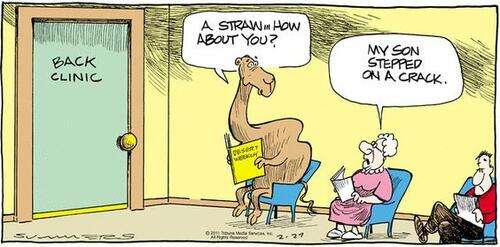Osteoporosis and exercise: revisiting old wives tales about bone density
Technically speaking, osteoporosis is a metabolic disease that affects bone density, increasing the risk of certain bones to fracture. Those who are not medically minded, osteoporosis can be a diagnosis of dread. Add to that a lack of clarity regarding osteoporosis and exercise, which has caused concern, confusion and conflict amongst exercise professionals and people with osteoporosis alike.
But fear not, recent guidance from the National Osteoporosis Society (NOS) ‘Strong, Steady and Straight’ sheds light on this skeleton in the closet.

Osteoporosis mainly affects women due to endocrine (hormonal) changes that occur over the life span. If we all lived long enough, we would all eventually be affected by osteoporosis. Whilst it is widely understood that physical activity and exercise help to strengthen bones, there has been a lack of clarity regarding the benefits of exercise and bone density.
Scary tale
Osteoporotic fractures mainly affect the hip, spine and wrist, leading to loss of independence, disability and even reduced life expectancy. Vertebral (spinal) fractures are associated with long term pain and psychological issues. No wonder it can be a disease that instils dis-ease.
Fear not
Histrorically, exercise and health professionals have diligently followed guidance, restricting and preventing forward bending or high impact exercise such as lifting weights with everyone who had osteoporosis. Previously it was suggested that high load exercise could lead to an increased risk of bone trauma.

The latest guidance questioned the robustness of the evidence that led to such cautious practice. The previous guidance was based on a small sized research study from 1984, that associated bone injury with end of range repeated and sustained flexion (bending forward) exercise in post-menopausal women. An additional study was a 2013 case study series based on yoga. The irony being that 2 small studies of questionable reliability or validity were apparently robust enough to direct exercise prescription. Furthermore, since then there has been no research to suggest that moderate to high impact exercise causes harm in people with osteoporosis.
The latest guidance (NOS) states that physical activity and exercise are not associated with significant harm, including vertebral fracture. It confidently stated that the benefits outweigh the risks.
A frightening lack of clarity
Compounding the issue, previous management of vertebral fracture was generalised to ALL with osteoporosis, even those without fracture.
‘Expert consensus’ suggested that exercise professionals should express caution when working with those with vertebral fracture. Even though this was not reliable, gold standard research, this collection of expert (personal) opinions weighed heavily on exercise professionals.
Whilst intended to support best practice for those working with people with osteoporosis, it can be seen how easily it created confusion amongst exercise professionals and consequently their patients and clients with osteoporosis.
A happy ending
As mentioned at the beginning, osteoporosis could affect us all if we lived long enough. However, having read the latest guidance, it is good to know that my practice has been validated as I have been incorporating elements of the guidance in my practice and Painless Pilates classes for a good while now. I will continue to promote healthy functional, weight baring exercise with everyone that I work with in clinic or in the class lessosn that I teach.
My clinic is in Blackwell (DL3 8QF) in Darlington. Click on the contact form below to arrange a discovery call, to discuss how I can help you.

Nick Watson physiotherapist
How I work – simple solutions to complex problems
How we can learn from our pain – learning from painful experiences
Dealing with persistent pain – the persistent pain puzzle

